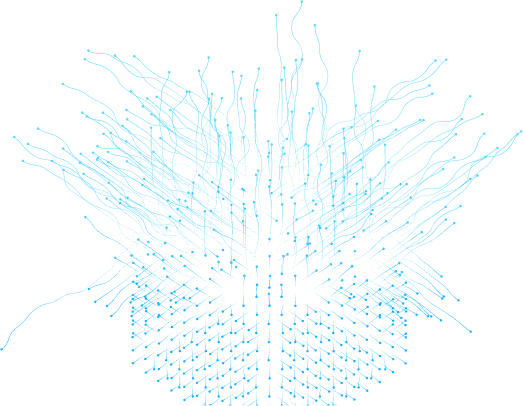
Why Consider Green Blockchain for Your Next Crypto Project
Table of Contents
The past decade has seen exponential growth in the use of blockchain technology. From a few users to millions, crypto investing and blockchain have seen a boom unlike anticipated by the general public and the primary trend predictors. Since blockchain technology has taken the world by storm, cryptocurrency’s energy consumption problem is a question of concern.
According to the Rocky Mountain Institute, Bitcoin alone consumes 127 terawatt-hours, more than many countries. In the United States, cryptocurrency activity is estimated to emit 25 to 50 million tons of CO2 yearly, on par with the annual emissions from diesel fuel used by US railroads. Simultaneously, with global warming effects becoming irreversible by the minute, adding more CO2 emissions to the environment is not viable. Blockchain technology drops significantly when the scalability’s impact on the environment is discussed.
Considering the drastic increase in transactions and the growing use of mining setups, initiatives for a greener solution have started coming up. The energy-efficient concept of blockchain is called “Green Blockchain”.
What is Green Blockchain?
Green Blockchain is a version of Blockchain stemming from the need for a solution to the ecological challenges present in blockchain technology. The Green Blockchain addresses the energy-intensive components of the traditional Blockchain and replaces them with energy-efficient features.
What are the components of Blockchain that make it “UnGreen”?
Before going into Crypto Green Blockchain, we must understand what makes a blockchain ungreen. The components of blockchain that make it high in energy consumption.
Consensus Mechanism
A consensus mechanism is the main component of the blockchain, as it is the verification component. A pool of transactions is placed together in a block when transactions are made. For these transactions and the block containing them to become part of the blockchain, they must be verified first. This is where the consensus mechanism comes in. The consensus mechanism is a predetermined set of rules that ensure the validity of the transactions and the block, along with its compatibility with the blockchain.
The consensus mechanism is the most computation-intensive component of the blockchain, thus making it the most energy-consuming as well.
There are several consensus mechanisms. Bitcoin and other blockchains use Proof of Work (PoW). In Proof of Work, an individual computational power earns them the right to mine.
Competitiveness
The addition of transactions and blocks into the blockchain requires verification and validation. This is done through the consensus mechanism. As blockchain is decentralized, the verification and validation are done by people on the network. An incentive is attached to it to keep the verification times short and to ensure people on the network are actively verifying transactions and blocks.
The people who do this are called miners. Miners usually run high-energy-consuming computers/mining rigs to get the right to add a block to win the incentive. As only one miner can be paid for one block, this introduces competitiveness, which means bigger mining rigs and higher energy consumption.
The Work Attached to the Mining Process
The mining process needed high-powered mining rigs with high computational capabilities because consensus mechanisms like Proof of Work require a puzzle to be solved to win the chance to mine a block. The puzzle is hard to solve, and the way to achieve the solution is a guessing game. This makes the blockchain secure, but in turn, requires high computational power and thus high energy consumption.
Endless Growth
Blockchain technology and cryptocurrency have been trending upward since its first induction. This has moved more people and even companies to jump into the mining game to profit from its incentives.
More people mining does not mean less work for verification; thus, the amount of energy consumed has increased, with no decrease in the amount of work done. This endless growth of blockchain technology and cryptocurrency makes them more ecologically challenging.
Eco-friendly Consensus Mechanism
The blockchain community has responded to concerns about the ecologically challenging aspects of blockchain technology. Elon Musk stopped payments for Tesla in the form of Bitcoin, and China has also been aiming to move to green blockchain solutions.
Some blockchains are moving to more green solutions by upgrading their consensus mechanisms. For example, Ethereum transitioned from a Proof of Work to a Proof of Stake consensus mechanism, and as a result, reduced over 99% of the energy consumption.
Several consensus mechanisms are more ecologically friendly. Let’s take a look at them.
Proof of Stake
In Proof of Stake, block validators are chosen based on their stake in the blockchain. The stake is the amount of cryptocurrency they have put up as collateral. This ensures that only one stakeholder is selected to mine the block, thus eliminating the competitiveness of increasing computational power, and the computational consumption of only one person is attributed to the usage of energy per block.
Moreover, unlike Proof of Work, Proof of Stake is not a guessing game and thus consumes less energy.
Delegated Proof of Stake
Delegated Proof of Stake is a variation of Proof of Stake, and like Proof of Stake, the computational consumption of only one person is attributed to the usage of energy per block. It also enhances scalability and overall network efficiency.
Practical Byzantine Fault Tolerance
Practical Byzantine Fault Tolerance is another low energy consumption consensus mechanism. The consensus about the transactions and blocks is reached through a series of votes amongst the network participants. While multiple people are involved in the network, as there is no computation-heavy puzzle involved, the energy consumption is low. Practical Byzantine Fault Tolerance is fast and efficient, making it ideal for real-time applications.
Directed Acyclic Graph
The Directed Acyclic Graph enables parallel transactions, reducing reliance on high-energy-consuming puzzles. In this type of consensus mechanism, each transaction is verified by its previous ones.
Examples of Eco-friendly Blockchains
Several blockchains have adopted eco-friendly components to reduce their carbon footprint. They are arguably more efficient as they have lowered transaction costs and times. Some examples of what you could use in your best green blockchain project are:
Cardano
Cardano uses Proof of Stake, making it energy efficient. People need to buy Cardano to gain the right to mine. This structure allows scalability.
Stellar
Stellar relies on a set of trusted nodes. This mechanism allows it to be faster than Proof of Work and Proof of Stake. Both fiat and green cryptocurrency can be traded on Stellar, with lower fees and lesser transaction times.
Nano
Network participants in Nano vote to select validators. Moreover, it uses a blockchain lattice, which means users get their blockchain on which they can transact instead of the main network. This way, less energy is consumed.
Hedera Hashgraph
Hedera Hashgraphy processes transactions in parallel, thus allowing it to process a higher number of transactions. It also consumes less energy than most of the blockchains.
What’s Next: Repurposed Energy for Green Bitcoin Mining
While the blockchain community has worked towards making blockchain technology more green-friendly, current consumption needs to be lowered to make it sustainable long-term. Another way to reduce the carbon footprint would be to regulate the type of energy blockchain technology uses. Some green blockchain companies have already taken a step in that direction. According to Accubitsm,
“Equinor and Crusoe Energy are well-known mining operations that sell excess energy. A Houston-based IT firm, Lancium, announced its plans to build a $150 million renewable energy mining plant for energy purposes.”
Conclusion
While the world is headed for a potential climate shift and disaster, an ever-growing technology like blockchain needs to be sustainable in the long term, given all the value and dependencies that are attached to it. We at InvoBlox can help you determine which eco-friendly blockchain best suits for your next eco-friendly crypto project.
Table of Contents
The past decade has seen exponential growth in the use of blockchain technology. From a few users to millions, crypto investing and blockchain have seen a boom unlike anticipated by the general public and the primary trend predictors. Since blockchain technology has taken the world by storm, cryptocurrency’s energy consumption problem is a question of concern.
According to the Rocky Mountain Institute, Bitcoin alone consumes 127 terawatt-hours, more than many countries. In the United States, cryptocurrency activity is estimated to emit 25 to 50 million tons of CO2 yearly, on par with the annual emissions from diesel fuel used by US railroads. Simultaneously, with global warming effects becoming irreversible by the minute, adding more CO2 emissions to the environment is not viable. Blockchain technology drops significantly when the scalability’s impact on the environment is discussed.
Considering the drastic increase in transactions and the growing use of mining setups, initiatives for a greener solution have started coming up. The energy-efficient concept of blockchain is called “Green Blockchain”.
What is Green Blockchain?
Green Blockchain is a version of Blockchain stemming from the need for a solution to the ecological challenges present in blockchain technology. The Green Blockchain addresses the energy-intensive components of the traditional Blockchain and replaces them with energy-efficient features.
What are the components of Blockchain that make it “UnGreen”?
Before going into Crypto Green Blockchain, we must understand what makes a blockchain ungreen. The components of blockchain that make it high in energy consumption.
Consensus Mechanism
A consensus mechanism is the main component of the blockchain, as it is the verification component. A pool of transactions is placed together in a block when transactions are made. For these transactions and the block containing them to become part of the blockchain, they must be verified first. This is where the consensus mechanism comes in. The consensus mechanism is a predetermined set of rules that ensure the validity of the transactions and the block, along with its compatibility with the blockchain.
The consensus mechanism is the most computation-intensive component of the blockchain, thus making it the most energy-consuming as well.
There are several consensus mechanisms. Bitcoin and other blockchains use Proof of Work (PoW). In Proof of Work, an individual computational power earns them the right to mine.
Competitiveness
The addition of transactions and blocks into the blockchain requires verification and validation. This is done through the consensus mechanism. As blockchain is decentralized, the verification and validation are done by people on the network. An incentive is attached to it to keep the verification times short and to ensure people on the network are actively verifying transactions and blocks.
The people who do this are called miners. Miners usually run high-energy-consuming computers/mining rigs to get the right to add a block to win the incentive. As only one miner can be paid for one block, this introduces competitiveness, which means bigger mining rigs and higher energy consumption.
The Work Attached to the Mining Process
The mining process needed high-powered mining rigs with high computational capabilities because consensus mechanisms like Proof of Work require a puzzle to be solved to win the chance to mine a block. The puzzle is hard to solve, and the way to achieve the solution is a guessing game. This makes the blockchain secure, but in turn, requires high computational power and thus high energy consumption.
Endless Growth
Blockchain technology and cryptocurrency have been trending upward since its first induction. This has moved more people and even companies to jump into the mining game to profit from its incentives.
More people mining does not mean less work for verification; thus, the amount of energy consumed has increased, with no decrease in the amount of work done. This endless growth of blockchain technology and cryptocurrency makes them more ecologically challenging.
Eco-friendly Consensus Mechanism
The blockchain community has responded to concerns about the ecologically challenging aspects of blockchain technology. Elon Musk stopped payments for Tesla in the form of Bitcoin, and China has also been aiming to move to green blockchain solutions.
Some blockchains are moving to more green solutions by upgrading their consensus mechanisms. For example, Ethereum transitioned from a Proof of Work to a Proof of Stake consensus mechanism, and as a result, reduced over 99% of the energy consumption.
Several consensus mechanisms are more ecologically friendly. Let’s take a look at them.
Proof of Stake
In Proof of Stake, block validators are chosen based on their stake in the blockchain. The stake is the amount of cryptocurrency they have put up as collateral. This ensures that only one stakeholder is selected to mine the block, thus eliminating the competitiveness of increasing computational power, and the computational consumption of only one person is attributed to the usage of energy per block.
Moreover, unlike Proof of Work, Proof of Stake is not a guessing game and thus consumes less energy.
Delegated Proof of Stake
Delegated Proof of Stake is a variation of Proof of Stake, and like Proof of Stake, the computational consumption of only one person is attributed to the usage of energy per block. It also enhances scalability and overall network efficiency.
Practical Byzantine Fault Tolerance
Practical Byzantine Fault Tolerance is another low energy consumption consensus mechanism. The consensus about the transactions and blocks is reached through a series of votes amongst the network participants. While multiple people are involved in the network, as there is no computation-heavy puzzle involved, the energy consumption is low. Practical Byzantine Fault Tolerance is fast and efficient, making it ideal for real-time applications.
Directed Acyclic Graph
The Directed Acyclic Graph enables parallel transactions, reducing reliance on high-energy-consuming puzzles. In this type of consensus mechanism, each transaction is verified by its previous ones.
Examples of Eco-friendly Blockchains
Several blockchains have adopted eco-friendly components to reduce their carbon footprint. They are arguably more efficient as they have lowered transaction costs and times. Some examples of what you could use in your best green blockchain project are:
Cardano
Cardano uses Proof of Stake, making it energy efficient. People need to buy Cardano to gain the right to mine. This structure allows scalability.
Stellar
Stellar relies on a set of trusted nodes. This mechanism allows it to be faster than Proof of Work and Proof of Stake. Both fiat and green cryptocurrency can be traded on Stellar, with lower fees and lesser transaction times.
Nano
Network participants in Nano vote to select validators. Moreover, it uses a blockchain lattice, which means users get their blockchain on which they can transact instead of the main network. This way, less energy is consumed.
Hedera Hashgraph
Hedera Hashgraphy processes transactions in parallel, thus allowing it to process a higher number of transactions. It also consumes less energy than most of the blockchains.
What’s Next: Repurposed Energy for Green Bitcoin Mining
While the blockchain community has worked towards making blockchain technology more green-friendly, current consumption needs to be lowered to make it sustainable long-term. Another way to reduce the carbon footprint would be to regulate the type of energy blockchain technology uses. Some green blockchain companies have already taken a step in that direction. According to Accubitsm,
“Equinor and Crusoe Energy are well-known mining operations that sell excess energy. A Houston-based IT firm, Lancium, announced its plans to build a $150 million renewable energy mining plant for energy purposes.”
Conclusion
While the world is headed for a potential climate shift and disaster, an ever-growing technology like blockchain needs to be sustainable in the long term, given all the value and dependencies that are attached to it. We at InvoBlox can help you determine which eco-friendly blockchain best suits for your next eco-friendly crypto project.
FAQS
Yes, Polkadot became a member of the green crypto family by offering a Nominated Proof-of-stake (NPoS) model that uses a fraction of energy among conventional blockchains. In recent research, Polkadot has the lowest carbon footprint compared to other proof-of-stake protocols.
As of September 2023, prominent green coins are Chia (XCH), Cardano (ADA), Nano (NANO), and Stellar Lumens (XLM) with Polkadot (DOT) being the greenest cryptocurrency.
The arrows in blockchain show the amount of coins transferred in the transaction - the green arrow shows the inbound transactions, the amount transferred to your address will be visible with the green arrow.
Proof of green blockchain is an initiative with the Carbon Crowd by DFNITIY foundation and the ICP ecosystem to make the internet computer carbon footprint transparent.





